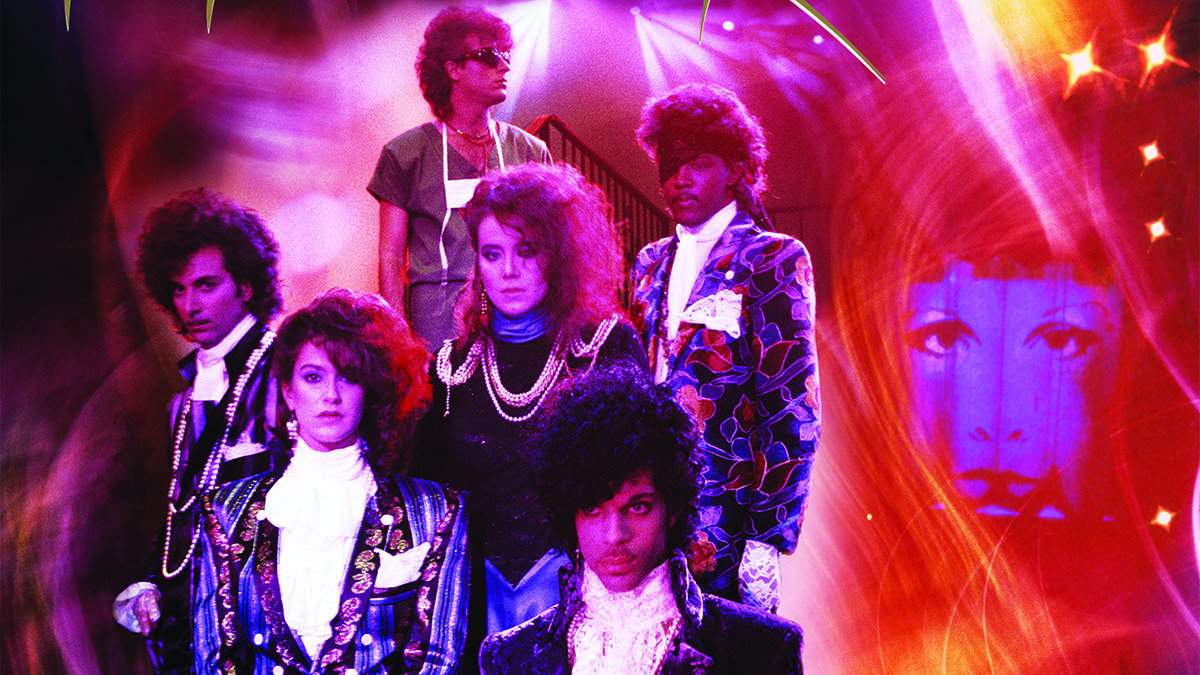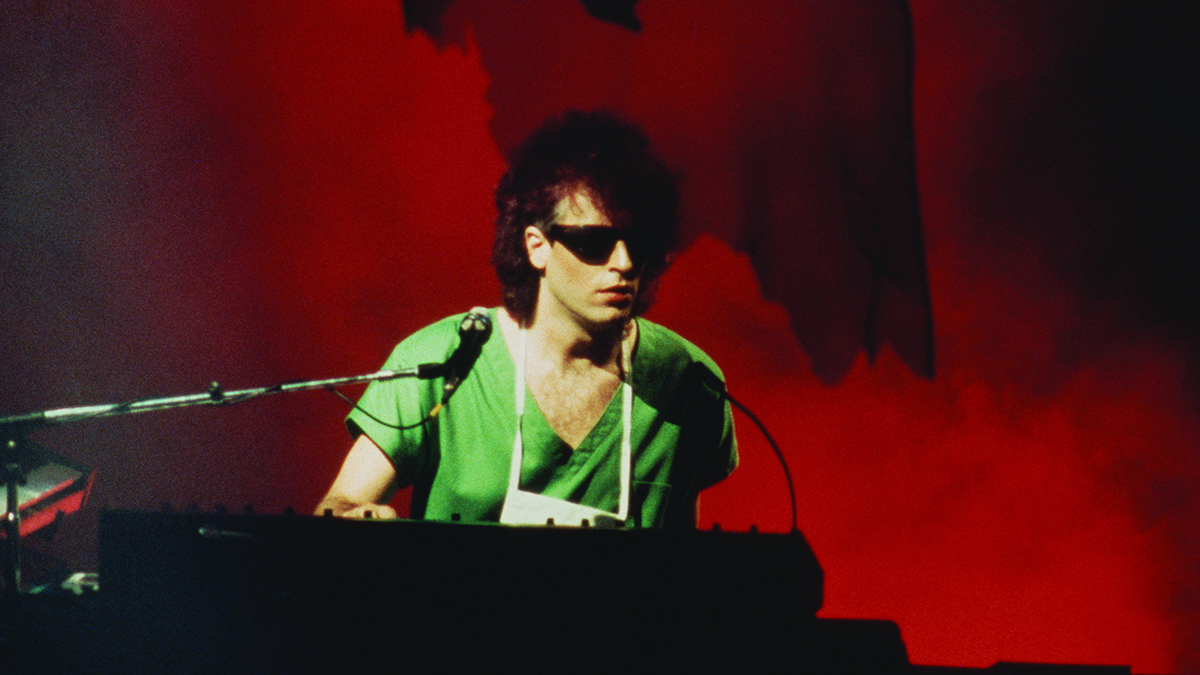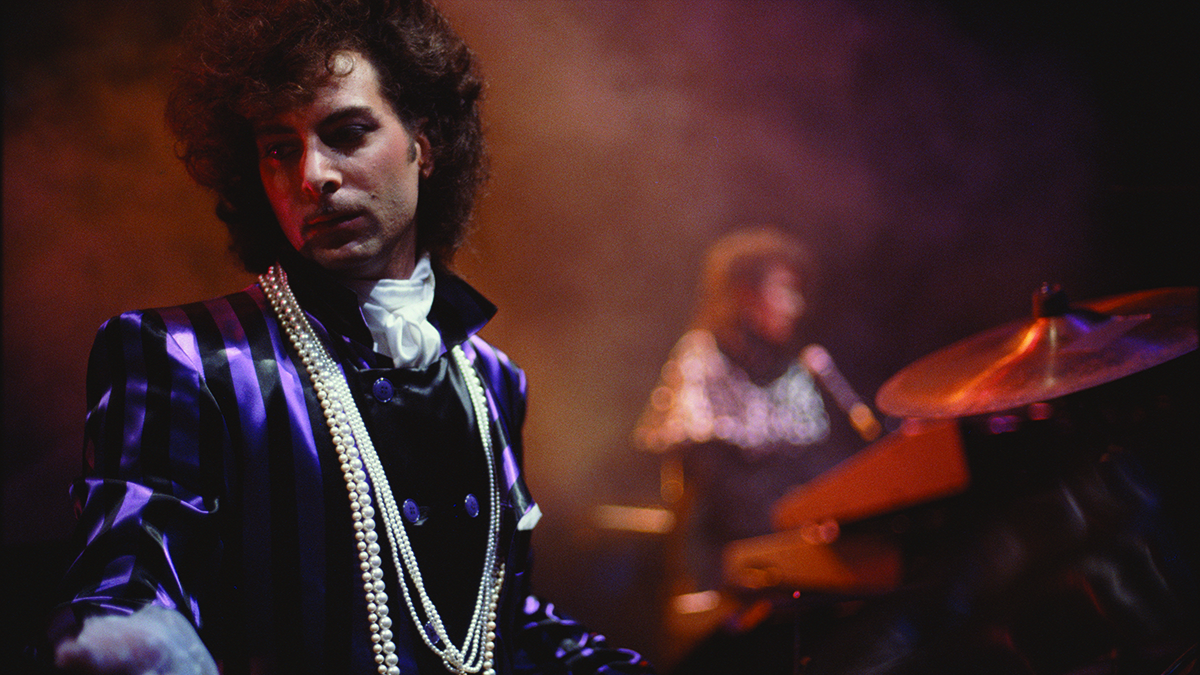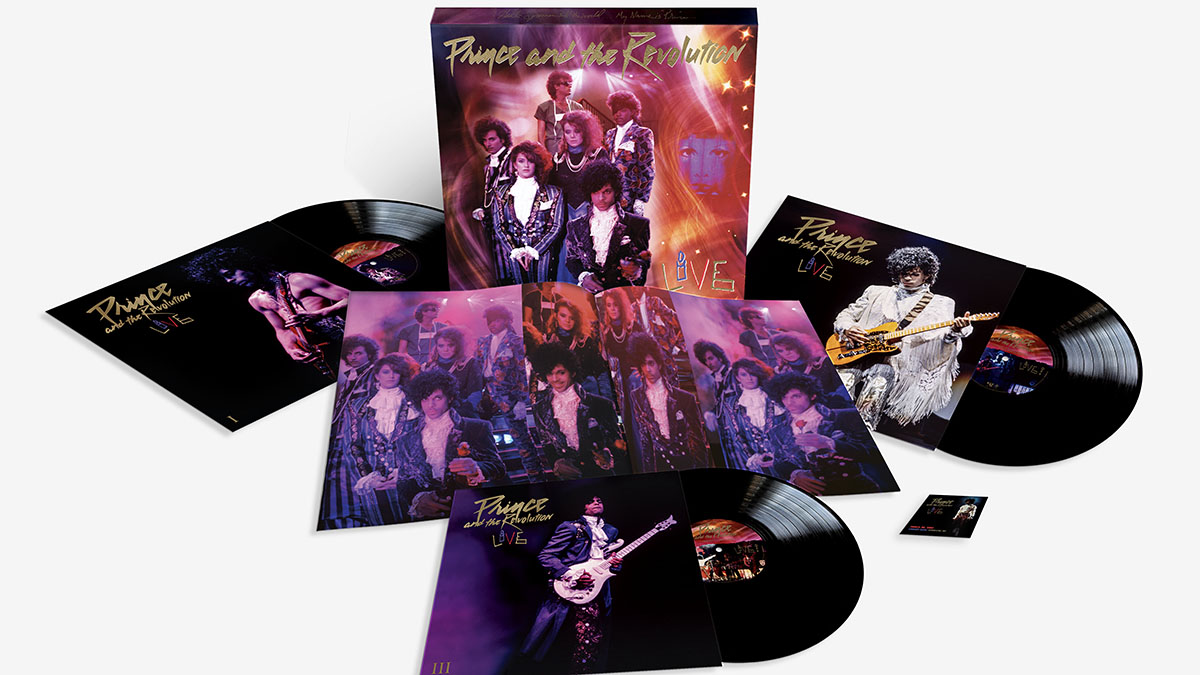The Revolution’s Dr Fink and Bobby Z on playing with Prince: “The music was his only real form of communication"
Best of 2022: “If he likes what you're doing, it's in - if he hates what you're doing, you know in about one second”

Join us for our traditional look back at the stories and features that hit the spot in 2022
Best of 2022: The Revolution will not be televised? Try telling that to Prince and his band as they took to the stage on 30 March 1985 at the Carrier Dome in Syracuse, New York.
Prince liked it loud on stage... your head would be vibrating after those shows. Your body and your mind were shaken to the core
Bobby Z
Far more than just another stop on the juggernaut that was the Purple Rain tour, for which more than 1.7 million tickets are said to have been sold, the show was also being broadcast live across Europe via satellite - no mean feat in those days - later to be released on video. In short, this gig mattered.
Of course, there was already no shortage of pressure. The tour came off the back of not only a hugely successful album - Purple Rain has now sold more than 25 million copies - but also a box-office-smashing movie of the same name. Oh yeah, and Prince had picked up a Best Original Song Oscar for the title track.
“We were probably never hotter," says Revolution drummer Bobby Z (Robert Rivkin). “It definitely had that end of school feeling - we were happy to play again, because we weren't in the middle [of the tour]. It was the end of the tunnel. And we were going for it every night.”
The show has now been remixed and reissued - Prince and The Revolution: Live is available as a 3-LP set, a 2-CD/Blu-ray bundle, and a limited-edition Collector’s Edition that can be purchased exclusively from the official Prince Store. The film has been digitally enhanced for the Blu-ray, which offers selectable stereo, 5.1 surround and Dolby Atmos audio mixes.
"I just remember that it was nerve wracking because we had to be on top form for the show,” remembers keyboard player Matt “Dr” Fink, another musician who was by now well-embedded into the Prince universe. “We knew that, boy, we got to really concentrate hard, not make mistakes. And the worst part is that playing in that big venue was difficult because it's so huge that the slapback echo in there was difficult to judge - at soundcheck the drums were just flying back at you out of time."
Get the MusicRadar Newsletter
Want all the hottest music and gear news, reviews, deals, features and more, direct to your inbox? Sign up here.
“It's hard to find the one in that,” adds Bobby Z, drily.
Matters improved once the dome started to fill up with people, but there were still the extreme volume levels to contend with.
"Prince liked it loud on stage so, you know... put it this way - your ears would ring on the pillow,” confirms Bobby Z. “Your head would be vibrating after those shows. Your body and your mind were shaken to the core.”
Despite the difficulties of playing in such a large space, Matt Fink has no regrets about the way the gig turned out: “I think we pulled it off just fine in spite of that,” he says. “You know, the rest of the venues were all arenas - it's not as difficult to play in those as that large of a space. But I just remember that any dome stadium like that, or the Superdome in New Orleans, anywhere else we played like that was not fun, necessarily."
Fail to prepare...
Fun. Now, there’s a word. Could playing with Prince ever be enjoyable? Describing him as a perfectionist is like saying that he ‘had a bit of a thing’ for the colour purple, so how were the stress levels?
“Prince put the pressure on himself, too,” Bobby Z reminds us, “so you had to rise to his level. So we just rose to that level the best we could to keep up with him emotionally and spiritually. I mean, he would pile challenges on nightly.”
It comes as no surprise to learn that the shows were high-stress occasions, but rehearsals weren’t exactly a walk in the Paisley Park either.
“You had to be prepared,” says Matt Fink. “You know, do your homework, listen to the songs at home as much as possible and be ready to play them perfectly. The first day of rehearsal. It was kind of like, other than changing arrangements or adding parts, he just wanted you to know the recorded version really well. And if you didn't, you got in trouble.
“That happened to me one time when I came to rehearsal unprepared and he just dismissed everybody and said 'OK Matt - you get to work on the songs for a while while we take a break’.”

Bobby Z also recalls the intensity of the rehearsals, and the standards that were expected: “Like a professional team at any level, you arrive at his time, and you leave when he's done. I mean, there's no schedule. So any day could be long or short, at his whim, but the rehearsals themselves, as Matt is saying, I mean, we had to pick a part and go with it, or a way to play it, and go with it. And if he said, 'No, that's not the part', then you have to know how to go back to the album. Any innovation is based off the album, that's kind of like the Bible. And then he can change the variation of it. Or you can change variation. If he likes what you're doing, it's in - if he hates what you're doing, you know in about one second."
Did that mean that Prince was happy to take feedback from his band, then?
"A little bit, yeah,” replies Matt Fink. “He would request ideas sometimes or arrangement ideas from time to time, like, 'Hey, I'm trying to find a better transition here and I haven't quite nailed this - have you got any thoughts?' You know, that kind of stuff. And then, obviously, with Purple Rain, we played on half of the record; we pretty much knew a lot of it getting ready to record those songs. And then the songs that he did all by himself pretty much in the studio - like The Beautiful Ones and When Doves Cry, things like that - those you had to really rehearse carefully."
"Those two live were really cool, though,” adds Bobby Z, “because you're playing all his parts and adding embellishments to something really incredible. Like The Beautiful Ones - live, that was really a really spectacular moment. It's a tough song. It's a downtempo song, but it's got a lot of stuff going on."
"Yeah, we really pulled it off well,” agrees Matt Fink.
Baby I'm a-scarred
Prince being Prince, though, it wasn’t enough for band members to know their parts inside out - they had to be able to change them at a moment’s notice, too. Arrangements were frequently tinkered with during a tour, sometimes on the day of the show. In fact, not just ‘sometimes’, it turns out.
"Strictly day of show,” says Matt Fink, firmly. “I mean, the changes would take place at soundcheck, and you would learn a new thing, or bring a new song in, or he'd try a new song and just see if it was working - something he was writing or not writing, or a new arrangement - you'd have to play it that night. If there was a new transition or a new song in the set that he would bring in at that point, then yes, you'd play it that evening.
"The way I got around it was that we would all record on our boombox at that soundcheck rehearsal and then we'd go in the dressing room and review it and then play it again that night."
“We tried it the other way without reviewing and it didn't go so well one night,” adds Bobby Z. “You fix problems very quickly. But yeah, you could walk in the arena and he'd be playing something and you kind of got the feeling like, you know, get ready because he's gonna put this in somewhere and you don't know where so just… here we go."
It all sounds rather like performing a high wire act without a safety net… and that’s before you consider the unplanned, on-the-fly changes that would be made during a show.
"Baby I'm A Star was the thing of nightmares,” chuckles Bobby Z. “He'd play Simon Says with us. You've got your band leader trying to 'get you' - it's a whole different kind of element.”
Drum computer blues
It’s worth remembering at this point that, back in 1985, music technology was nowhere near what it is today, so bringing Prince’s more experimental studio recordings to the stage often presented a serious challenge.
“Darling Nikki was my nightmare,” says Bobby Z, sounding like a man who still hasn’t quite recovered. “I mean, there's a lot of technical aspects [to the song]. It was just like early rocket ships to the moon or something”
There was also the small matter of Prince’s changing taste in instrumentation - by 1985, he’d fully embraced the LinnDrum, using it on countless studio recordings. This being the case, having just an acoustic drum kit on stage wasn’t going to cut it anymore, so Bobby Z was forced to adapt.
"You start up playing drums as much as you can, on acoustic drums, and then all of a sudden you are caught in history,” he explains. “All the drummers for thousands of years have been watching the Japanese and African drummers and now I'm at this crossroads with this machine. Me alone - I felt like Moses on the mountain.
“And Prince's manager told me 'Well, it's here - you might as well learn how to use it'. And that was really good advice, because Prince really took that thing to the max.”

The solution for using the Linn on stage was to create a system based on acoustic guitar mics that sat inside the drums. These would then trigger the pulse back into the Linn.
“The genius of the Linn was that it had individual outs - the kick drum, the snare drum and the percussion sounds - so you could build an interface,” says Bobby Z. But this setup came with its own new set of problems.
“We were hitting pads, striking them, and they would double trigger and they would do weird things,” he recalls. “And so here I am standing at the precipice of all these drummers in the world. And I'm worried about double triggers. It's certainly not what Buddy Rich had to worry about.
“And I managed it quite well - I mean, on fear of death - but I managed it quite well; to get all these sounds plus the Pearl Syncussions [a 1979 drum synth] in there. But it's like I was a muse for this electronic vision that Prince had.”
What of Dr Fink’s synths, though? Were they all Prince’s choices, or did Matt have a say in what he used?
“During that era I definitely brought some keyboards in for that tour that were new to him,” says Fink. “Like the Yamaha DX7 - that was introduced to him through me. And then he started using it, and he put it all over the Around The World In A Day album. The Oberheims were there from day one."
We’re heard before - from Revolution member Lisa Coleman, no less - that Prince was happy to use presets in many cases, but he was also keen to put his own stamp on them.
"He liked to edit presets a lot,” confirms Fink. “He would modify the factory presets. And then occasionally he would program his own stuff, too, just like I did. But it just depended because the Oberheim would give you a really great palette of sounds to begin with, that would come with the unit. And you could very easily edit those, which was common."
It just was really complicated outside of the music; the music was his only real form of communication
Bobby Z
Take us with U
Throughout our conversation, it becomes clear that both Bobby Z and Fink continue to hold Prince in great affection, becoming particularly nostalgic when discussing the early part of his career.
Bobby Z was first to come onboard, in 1978: "Prince, Andre [Cymone, bassist] and I were a trio for a little while, couldn't find anybody else,” he explains. “They were super picky. You know, it took me a year and a half to get in. And then after that, it was like, they were just so picky; they didn't like anybody.”
Bobby Z and Fink already knew each other, and the drummer was keen to get his friend involved. However, he had to wait for the right moment.

Prince and The Revolution: Live isn’t the only Prince live performance to be released as an album, but it’s one of the few not to feature any post-recording overdubs. So, how do Bobby Z and Dr Fink that the great man would feel about this ‘warts-and-all’ reissue?
"He probably would have been amenable to releasing more live projects, but the issue is, it doesn't lend itself as well to making it sound like the record. Which is why he maybe overdubs and stuff on Sign o' the Times [1987 concert movie]. But my recollection is he only overdubbed when it was really necessary, or when something definitely needed a fix, or someone made a mistake, or something.
“I do remember playing the bass part on the live Sign O' The Times, and what happened was there was a funny thing that happened in the soundtrack with like, again, the echo in the building. It sounded like it was a little off, so I had to recut it."
"Would he want a concert out like this?” ponders Bobby Z. “You know, he would look back and say, 'why - I'm doing something today? Why can't what I'm doing today be in this beautiful package?' So yeah, he was never about looking back."
“Matt had to be in the back pocket because I really thought that he had it but Prince was interested in another couple of people,” Says Bobby. “So you have to wait for the cycle to blow itself up. You couldn't force it. You could see when it was wrong. And you knew that it would end bad but you just couldn't push Prince as a person. You had to wait. That's why so many people never hung on for five minutes, you know, because you got to wait for him to kind of come around a little bit. He's got his own way of doing things, but he comes back. He does have a sense of 'human hood'. You know, he comes back.
“But you could misread him really quickly. It just was really complicated outside of the music; the music was his only real form of communication."
Fink eventually became part of the line-up in 1979, along with fellow keyboardist Gayle Chapman (later replaced by Lisa Coleman) and guitarist Dez Dickerson. The Revolution name was introduced to the world on the sleeve of 1982 album 1999 (albeit printed backwards), but it wasn’t until Purple Rain that the classic line-up - Prince, Wendy Melvoin (guitar and vocals), Brown Mark (guitar and vocals), Lisa Coleman (keyboards/piano and vocals), Dr Fink and Bobby Z took shape.
I did everything in my power to dissuade Prince from going through with it.
So, with the success that followed, did everyone assume that they’d be working with Prince for the foreseeable future?
"Well, in the beginning of it all I was hoping it would last a long time,” says Fink. “And then when we got to the level with all those members of the Revolution I thought, 'Yeah, this is gonna go for quite a while'. Who knew how long, but I thought that we could have legs to go for another 10 years, at least before we'd get tired of it or people would start leaving to do solo careers or whatever. Some groups have long careers and they just evolve and go on. And that to me had the potential for it."
Of course, it didn’t quite turn out like that - The Revolution disbanded after the Parade tour in 1986 and, although he continued to work with Prince until 1991, Matt Fink tells us that the break-up hit him hard.
"It affected me a great deal because it was like family being kind of broken apart,” he says. “And I did everything in my power to dissuade Prince from going through with it. But obviously he had his vision. And that was that."
Prince would go on to form other bands - notably the New Power Generation - but Bobby Z suspects that none had quite the same chemistry as The Revolution.
“I don't want to get in trouble with any of these other wonderful musicians who played with Prince - but The Revolution was a band of ideas,” he says. “I don't know if that interchange was ever equal to what The Revolution was able to input. I think he had some more walls up after us. So it's the last band he was 'in', you know."
The obvious final question, then, is had Prince not died in 2016, would The Revolution have reformed?
"I think he definitely would have capitalised on it,” says Bobby Z. “He talked to Matt and I about it. He always knew he had that in his back pocket. He didn't take it for granted.
“He didn't want to let go of his characters. He knew that we were still characters in this kind of world he created. He knew that there was value to it. It's just - like we talked about earlier - we were in a band, and that unfortunately has politics. It's not like you can just round us up; Wendy and Lisa speak. And they speak a lot. So it's fully, fully engaged politics.
“So a reunion would have involved a lot of talking, which he didn't really enjoy doing with band members. So the answer is yes, I think it would have happened, you know. The fact was that he respected The Revolution - he called us Mount Rushmore at one point, so he understood."
"Put it this way,” he concludes. “It was one of those things where the door wasn't closed; a lot of things the door was closed. This one wasn't one of them."
The 'Prince and The Revolution: Live' album and Blu-ray is out now via Legacy Recordings.



I’m the Deputy Editor of MusicRadar, having worked on the site since its launch in 2007. I previously spent eight years working on our sister magazine, Computer Music. I’ve been playing the piano, gigging in bands and failing to finish tracks at home for more than 30 years, 24 of which I’ve also spent writing about music and the ever-changing technology used to make it.









